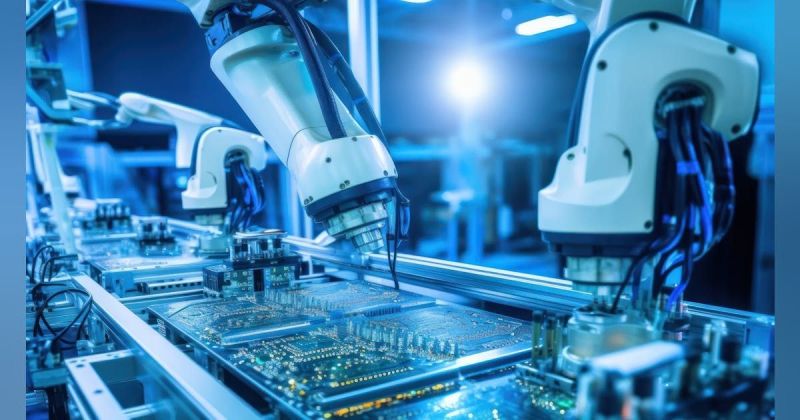The rapid evolution of technology has made energy-efficient stroboscopic systems pivotal in various industries, particularly in quality assurance (QA). These systems are not only essential for maintaining high standards but also contribute to significant energy savings. In this article, we delve into the various aspects of these systems, exploring their applications, benefits, and how they are transforming the QA landscape.

Understanding Stroboscopic Systems
Stroboscopic systems are devices that use flashing light to make a cyclically moving object appear slow-moving or stationary. This is achieved by matching the light’s flash rate with the movement of the object, providing a stop-motion effect. The stroboscope is highly valued in industrial settings for inspections and quality control processes.
The Importance of Energy Efficiency
In todays world, where sustainability is a priority, energy efficiency in stroboscopic systems is crucial. It not only reduces operational costs but also minimizes carbon footprints. By utilizing advanced technologies, these systems provide precise results while consuming less power.
Applications in Quality Assurance
Stroboscopic systems are extensively used in various industries to ensure product quality. For example, they play a crucial role in analyzing product uniformity, where they help in detecting inconsistencies and defects in products during the production process.
Role in Automotive Industry
In the automotive sector, stroboscopic systems are indispensable for testing components. They allow engineers to inspect parts such as gears and pulleys under motion, ensuring they meet the required standards. Our article on automotive part testing provides a deeper insight into their usage in this industry.
Benefits in Printing Industry
The printing industry also benefits significantly from these systems. They are used to ensure the accuracy and quality of prints by enabling real-time inspection of moving prints. To understand more about their impact, consider reading our detailed study on printing press QC.
Advantages of Energy-Efficient Systems
Energy-efficient stroboscopic systems offer numerous advantages that make them a preferred choice across industries:
Cost Savings
By reducing energy consumption, these systems lead to significant cost savings. This is particularly beneficial for industries with high operational costs.
Environmental Impact
With reduced energy usage, these systems contribute to a lower carbon footprint, aligning with global sustainability goals.
Improved Performance
Advanced energy-efficient systems provide enhanced performance, offering more accurate and reliable results during inspections.
Challenges and Solutions
Implementing energy-efficient stroboscopic systems comes with its set of challenges, such as initial costs and technical complexities. However, these can be mitigated with proper planning and by leveraging advancements in technology.
Overcoming Initial Costs
While the initial investment can be high, the long-term savings in energy costs and improved product quality justify the expenditure. Many industries are now seeing the value in making this upfront investment.
Technical Training
To fully leverage these systems, it is essential to train staff adequately. This ensures proper usage and maximizes the benefits derived from the systems.
Future of Stroboscopic Systems
The future of stroboscopic systems looks promising with ongoing technological advancements. Innovations are making these systems more efficient and versatile, expanding their applications across more industries.
Integration with AI
Integrating artificial intelligence with stroboscopic systems is the next frontier. This will enhance their capabilities, making them smarter and more intuitive.
Expansion into New Industries
As efficiency and sustainability become priorities, more industries will adopt these systems. This will lead to an increase in demand and further innovation.
Conclusion
In conclusion, energy-efficient stroboscopic systems are revolutionizing the way industries approach quality assurance. By offering precise results with lower energy consumption, they are a vital tool for industries aiming for sustainability and efficiency. As technology continues to evolve, these systems will become even more integral to industrial operations.

FAQ Section
1. What are stroboscopic systems used for? Stroboscopic systems are used to inspect and analyze moving objects, making them appear slow-moving or stationary for detailed examination.
2. How do energy-efficient systems save costs? They reduce energy consumption, leading to lower operational costs and significant long-term savings.
3. What industries benefit the most from these systems? Industries such as automotive, printing, and manufacturing benefit greatly due to their need for precise quality control.
This article contains affiliate links. We may earn a commission at no extra cost to you.
